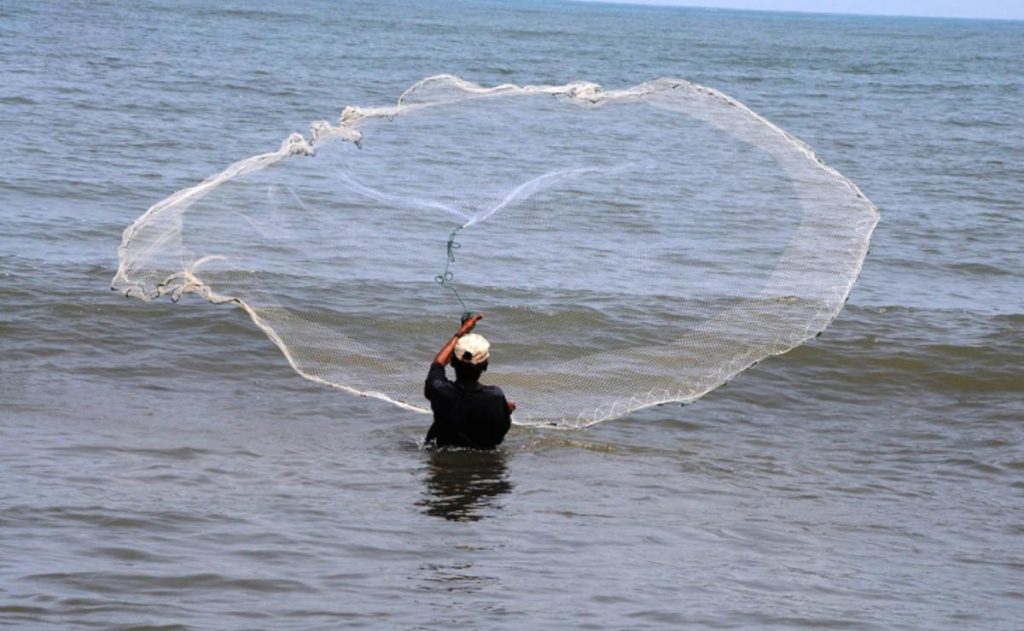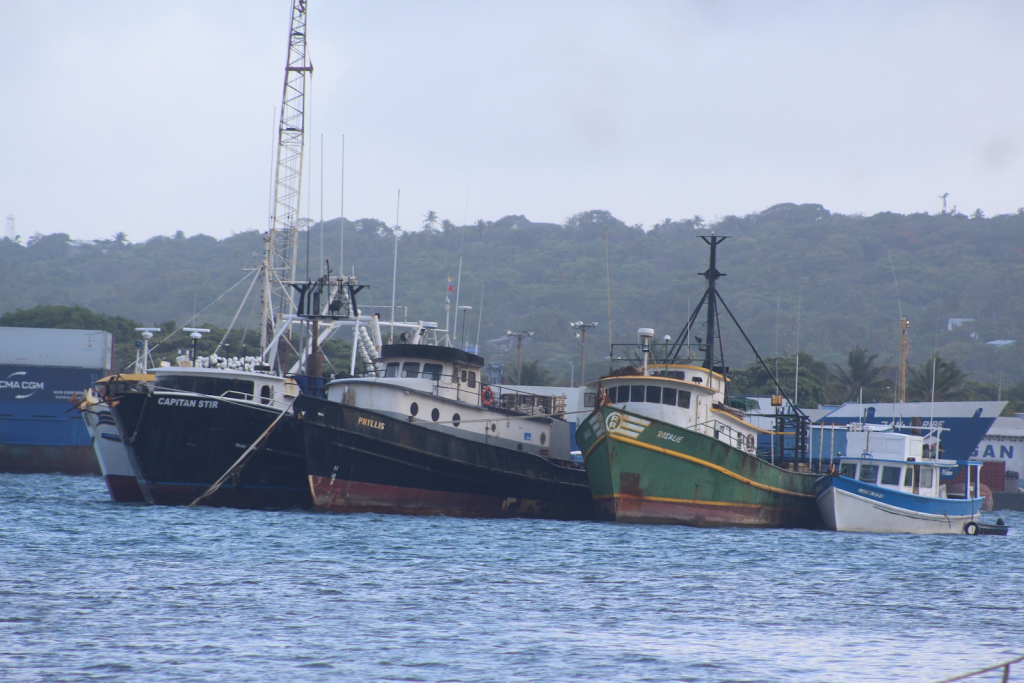Fishing represents an important part of the local economies, subsistence, and sociocultural heritage of the Seaflower Biosphere Reserve’s area. These activities are focused on Spiny Lobster (Panulirus argus), Queen Conch (Lobatus gigas), and groupers (fishes of the Serranidae family). The Queen Conch is considered by the fishers as the most overfished resource in the region (1). The development of industrial fisheries in the region have generated conflict with the native islanders, because the industrial activities have no local base and employ no islanders, besides the high fishing pressure and environmental harms of the industrial practices (2). The queen conch is listed on the Convention on Trade in Endnagered Species (CITES) since 1992 and its international trade has to be regulated
Lobsters are caught in the bottom traps fishery, which was expanded industrially in the 1980s, extracting 600 tons per year (3). Common management regulations include annual quotes, ban on juvenile lobsters and females carrying eggs (3). In addition to lobsters, other species such as crabs, snails, octopuses, sea cucumbers and sea stars, fishes, among others, are captured in the traps as by-catch. On the other hand, native artisanal and subsistence fishermen catch the lobsters doing freediving, a common method also used to fish for Queen Conch and different fishes.
Captured reef fish using traps include margates (Haemulon album), goatfishes (Mullidae), surgeonfishes (Acanthuridae), the Coney (Cephalopholis fulvus) and Graysby groupers (C. cruentatus). Handlines are used for snappers, groupers, grunts and jacks. Different parrotfishes (Scaridae) are fished with spearfishing, as well as triggerfishes (Balistidae) and chubs (Kyphosidae) (1).
Fleets looking for sharks as a target also fish in the Seaflower Biosphere Reserve, using longlines of up to 20 km in length, with 600 to 1000 hooks (4). This fishery focuses on different shark and ray species, and according to the vulnerability analysis made by Mejía-Falla et al. (2019), nine large commercial shark species are the most susceptible to capture: the Caribbean reef shark (Carcharhinus perezii), the Bull shark (C. leucas), the Silky shark (C. falciformis), the Lemon shark (Negaprion brevirostris), the Blacktip shark (C. limbatus), the Shortfin mako (Isurus oxyrinchus), the Tiger shark (Galeocerdo cuvier). Also the Great and Scalloped hammerheads (Sphyrna mokarran and S. lewini) which are both listed on Appendix II of the Convention in Trade of Endangered Species (CITES) since 2013 and for which international trade is regulated.
Pelagic species, which occur in the water column, are seasonally targeted by trolling. Targets of this fishery are mainly the wahoo (Acanthocybium solandri), rainbow runner (Elagatis bipinnulata), amberjack (Seriola rivoliana, S. dumerili), tunas (Scombridae), dolphinfish (Coryphaenidae) and bonito (Katsuwonus pelamis) (1). There is also a deep water fishery from 80 to 200 m depth, which use different methods including handlines, electric reels, and bottom longlines (1).

Catch-and-release fishing activities have been increasing in the Caribbean region, many times as a conservation tool, aiming to provide economic benefits from ecoturism related to recreational fishing (5). However, a consensus about the catch-and-release’s effectiveness is lacking (6), since post-release mortality range from near 0% to 90% (7). Therefore, a specific analysis for each catch-and-release fishery has to be examined to ensure its susteintability. In the Caribbean, common species captured by this fishery are the Atlantic Tarpon (Megalops atlanticus), Bonefish (Albula vulpes), Permit (Trachinotus falcatus), and Common Snook (Centropomus undecimalis) (5).
Main threats to biodiversity in the Seaflower Biosphere Reserve are overexploitation from artisanal and industrial fishing practices, as well as uncontrolled subsistence gathering along the coast (8). Experts have recommended to involve the communities in the management processes to increase conservation efforts effectiveness, and to implement precautionary measures, especially in those fisheries with high impact in the species and/or habitats. Another recommendation is to analyze other economic alternatives such as recreational diving and ecological tourism, to reduce the fishing pressure in the area, as well as to establish clear international collaborations (4).

References
(1) Friedlander, A., Nowlis, J. S., Sánchez, J. A., Appeldoorn, R., Usseglio, P., McCormick, C., Bejarano, S., & Mitchell-Chui, A. (2003). Designing effective Marine Protected Areas in Seaflower Biosphere Reserve, Colombia, based on biological and sociological information. Conservation Biology, 17(6), 1769-1784.
(2) Moe, J. M., Taylor, E., Howard, M., Baine, M., Connolly, E., & Chiquillo, M. (2007). Collaborative planning and management of the San Andres Archipelago’s coastal and marine resources: A short communication on the evolution of the Seaflower marine protected area. Ocean & Coastal Management, 50(3-4), 209-222.
(3) Castro, E., García, M., Grandas, Y., & Pomare, M. (2007). Impactos de la pesquería de Langosta Espinosa con Nasas sobre comunidades bénticas y peces arrecifales en el Archipiélago de San Andrés, Providencia y Santa Catalina: Hacia una pesca responsable. Gulf And Caribbean Fisheries Institute, 58, 348-354.
(4) Mejía-Falla, P. A., Castro, E. R., Ballesteros, C. A., Bent-Hooker, H., Caldas, J. P., Rojas, A., & Navia, A. F. (2019). Effect of precautionary management measure on the vulnerability and ecological risk of elasmobranchs captured as target fisheries. Regional Studies in Marine Science, 31, 100779.
(5) Adams, A. J. (2017). Guidelines for evaluating the suitability of catch and release fisheries: Lessons learned from Caribbean flats fisheries. Fisheries Research, 186, 672-680.
(6) Arlinghaus, R., Cooke, S. J., Lyman, J., Policansky, D., Schwab, A., Suski, C., Sutton, S. G., Thorstad, E. B. (2007). Understanding the complexity of catch-and-release in recreational fishing: an integrative synthesis of global knowledge from historical, ethical, social, and biological perspectives. Reviews in Fisheries Science, 15(1), 75-167.
(7) Muoneke, M. I., & Childress, W. M. (1994). Hooking mortality: a review for recreational fisheries. Reviews in Fisheries Science, 2, 123-156.
(8) Taylor, E., Baine, M., Killmer, A., & Howard, M. (2013). Seaflower marine protected area: Governance for sustainable development. Marine Policy, 41, 57-64.


